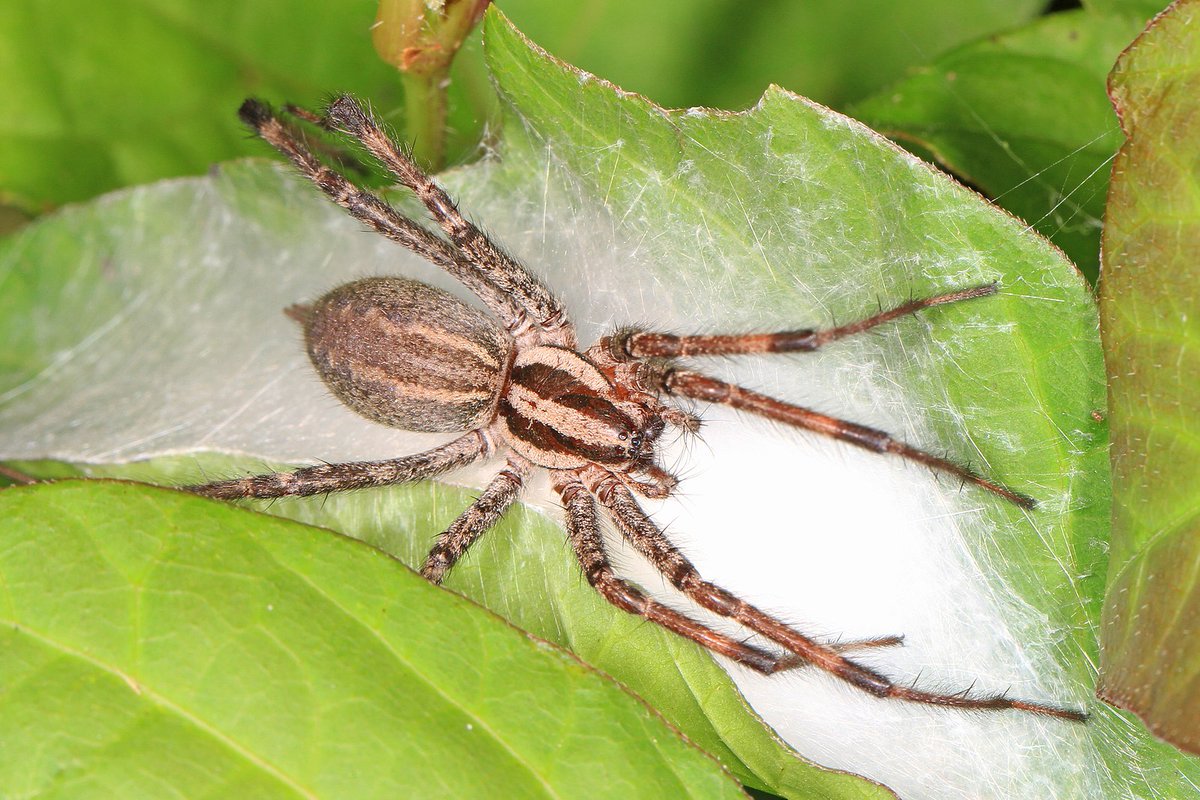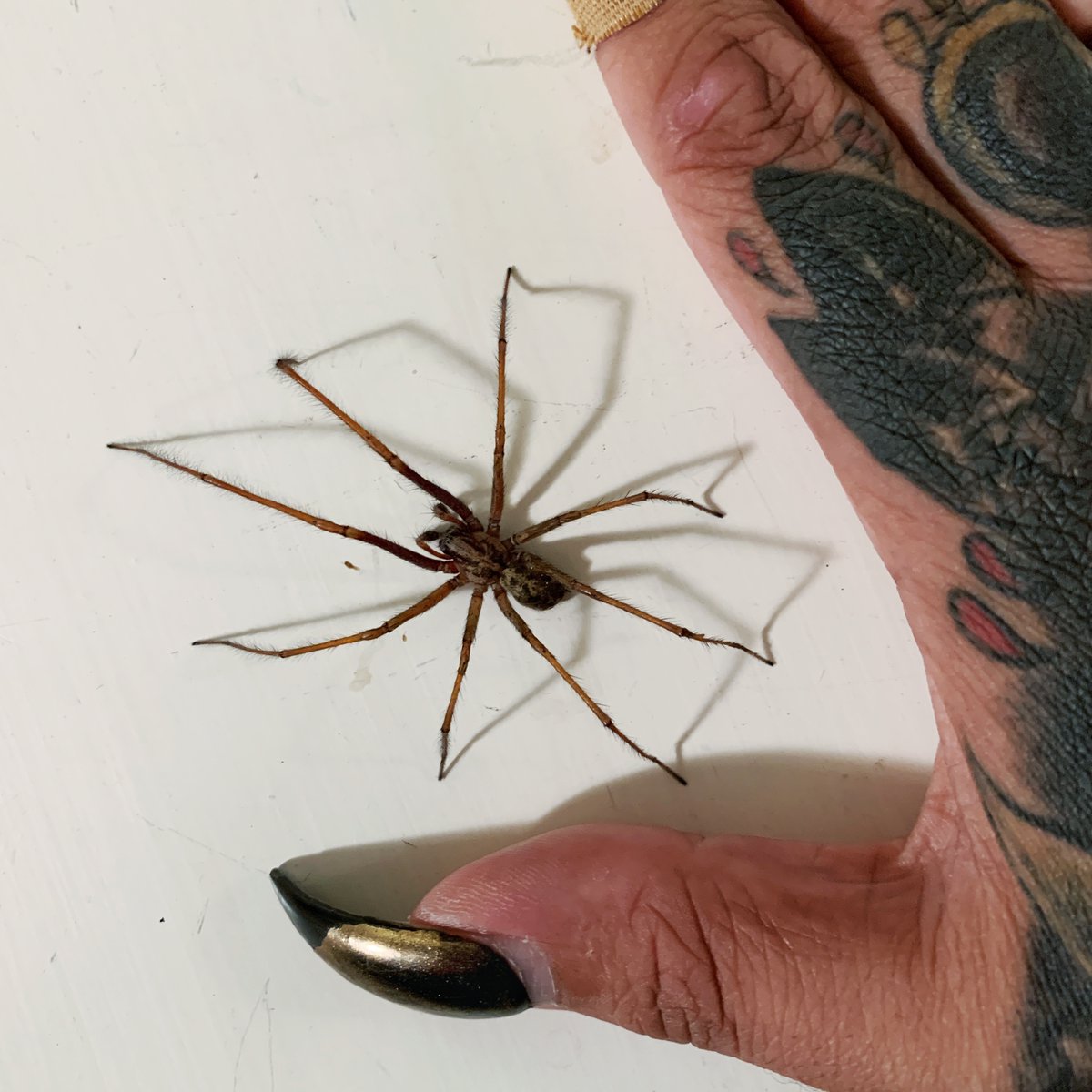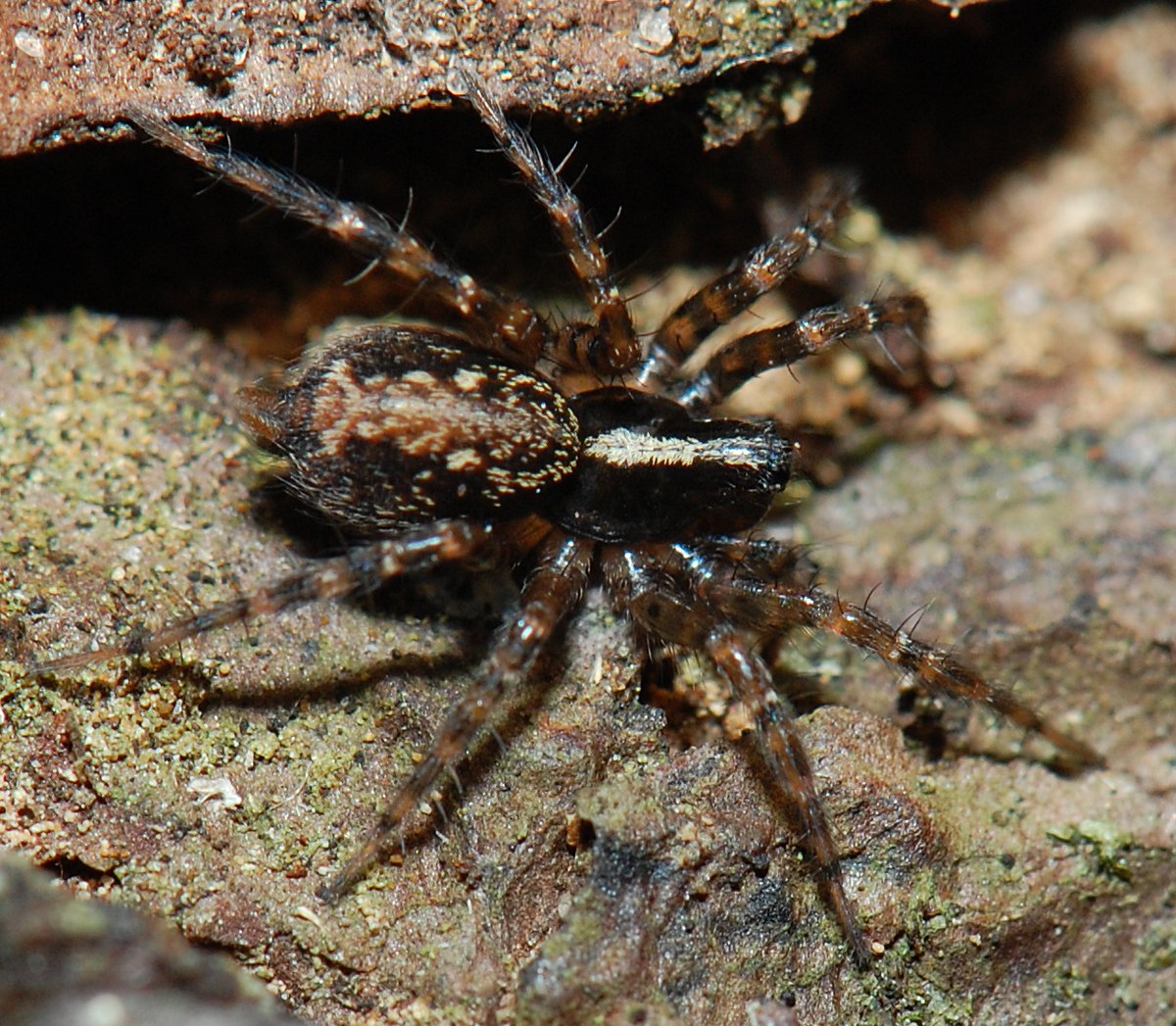
Next up in #ScienteaficABC, AGELENIDAE! This family comprises 87 genera, totalling 1307 species & has an almost cosmopolitan distribution making it a commonly encountered family. The pic shows a few examples of members & some common features. (Images: Wikimedia Commons & my own) 

Agelenid spiders vary quite a lot in appearance from genus to genus, but generally can be identified by eye arrangement (see my awful pic), web type/habitat & shape of cephalothorax... though, as always, there are some that do not fall in line with this which makes things fun 😂 

Some members of this family are commonly confused with other types of spider. Take this as an example... Agelenopsis sp. (grass spider) vs. Rabidosa rabida (wolf spider), both from Virginia. The most reliable way to tell them apart is their eyes & spinnerets. (Pics: Wikimedia) 



Wolf spiders have larger eyes and their spinnerets are not usually visible from above. Agelenopsis usually have elongated, visible spinnerets and smaller eyes in a different arrangement to those of a wolf. But you can easily see how they get confused! Anyway, moving on...
This is an adult male Eratigena sp. atrica group/giant house spider, a common sight in late summer and autumn in the UK, elsewhere in Europe & limited areas in the PNW (USA). Particularly notable in the UK as it is one of our largest species & very common in/around the house! 

The name giant house spider usually refers to one of a few Eratigena species. To the untrained eye, other genera can look very much like them though. This is a Tegenaria silvestris. At a glance, they are similar, but the leg annulations (stripes) immediately set them apart. 

Size varies a lot in this family with some species staying very small (less than 5mm body length) & some reaching leg spans of up to 10cm. Some live very close to humans, whereas some prefer remote habitats. This is Textrix denticulata, a smaller species. (image: Wikimedia) 

Their webs are characteristically made up of a flat sheet of non-sticky silk, with a funnel shaped retreat, giving them (another) common name funnel-web spiders... NOT to be confused with Australian funnel web spiders! They are capable of impressive speed, esp. on their webs.
As a final note, this family is not medically significant. Though unlikely, if you were ever to get bitten, the venom they possess cannot harm you. Somehow, Eratigena agrestis, also called the 'hobo spider', earned a reputation for being dangerous. They aren't 😁
All images from Wikimedia Commons linked below. All other images taken by me.
commons.wikimedia.org/wiki/File:Laby…
commons.wikimedia.org/wiki/File:Text…
commons.wikimedia.org/wiki/File:Holo…
commons.wikimedia.org/wiki/File:Gras…
commons.m.wikimedia.org/wiki/File:Rabi…
commons.wikimedia.org/wiki/File:Laby…
commons.wikimedia.org/wiki/File:Text…
commons.wikimedia.org/wiki/File:Holo…
commons.wikimedia.org/wiki/File:Gras…
commons.m.wikimedia.org/wiki/File:Rabi…
@threadreaderapp unroll
• • •
Missing some Tweet in this thread? You can try to
force a refresh















